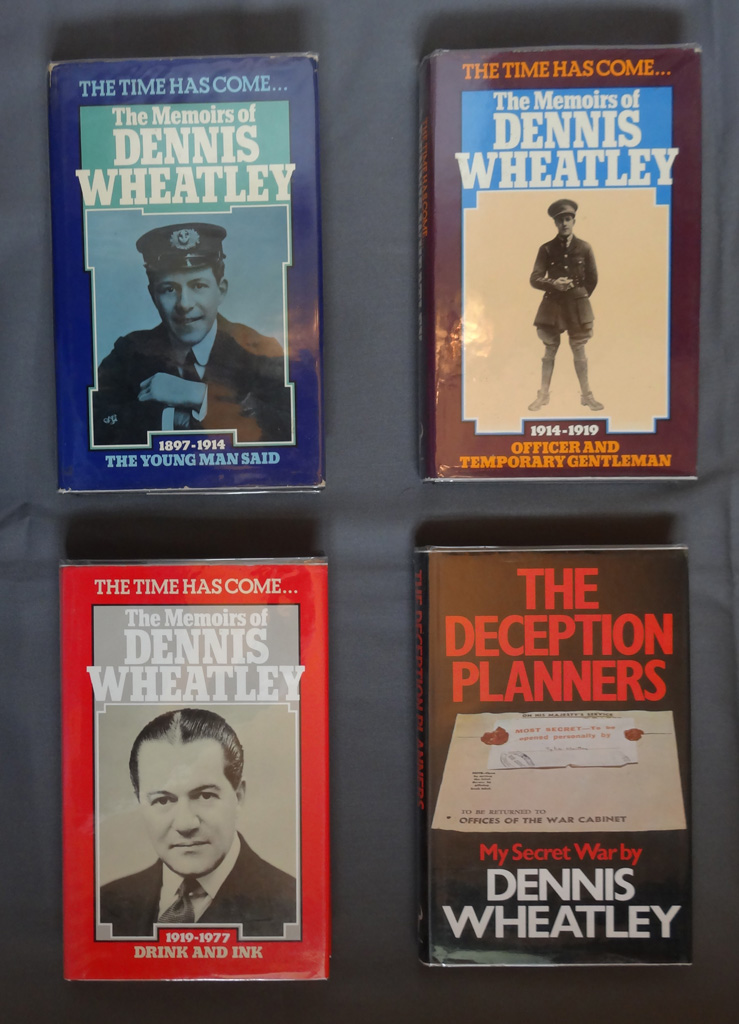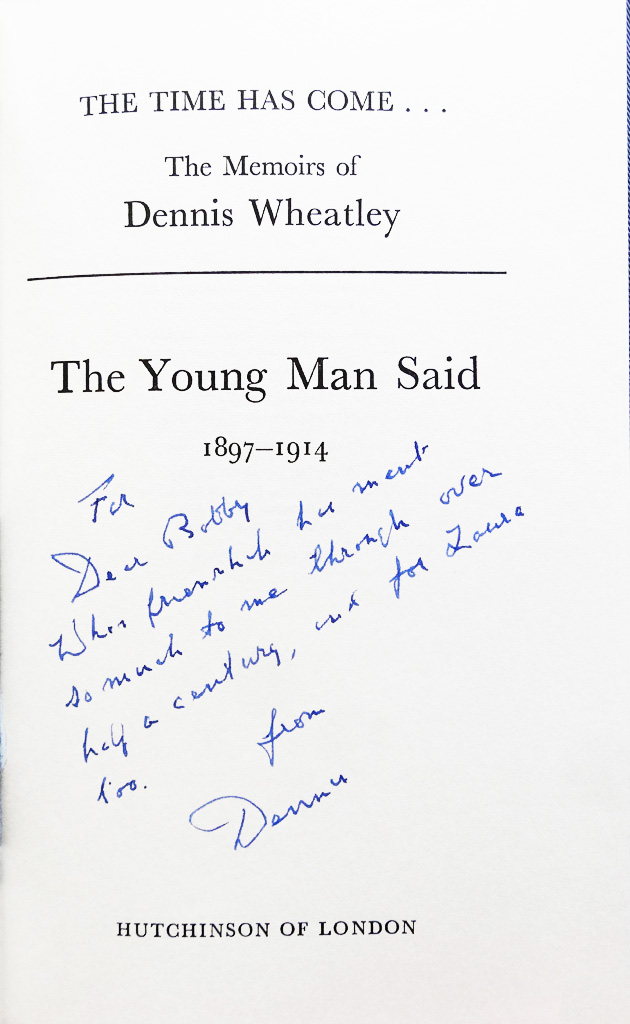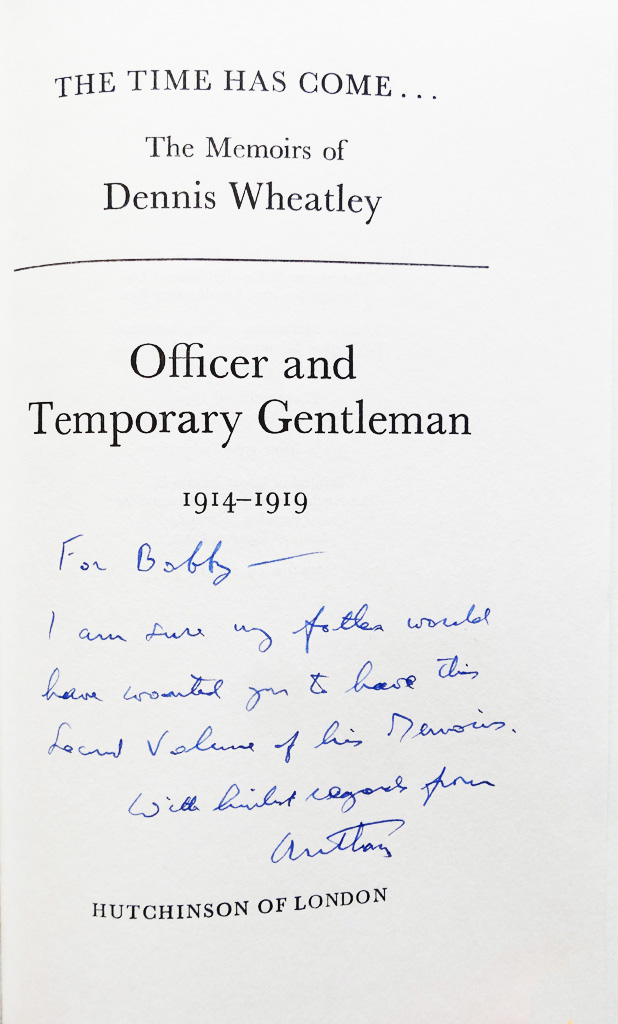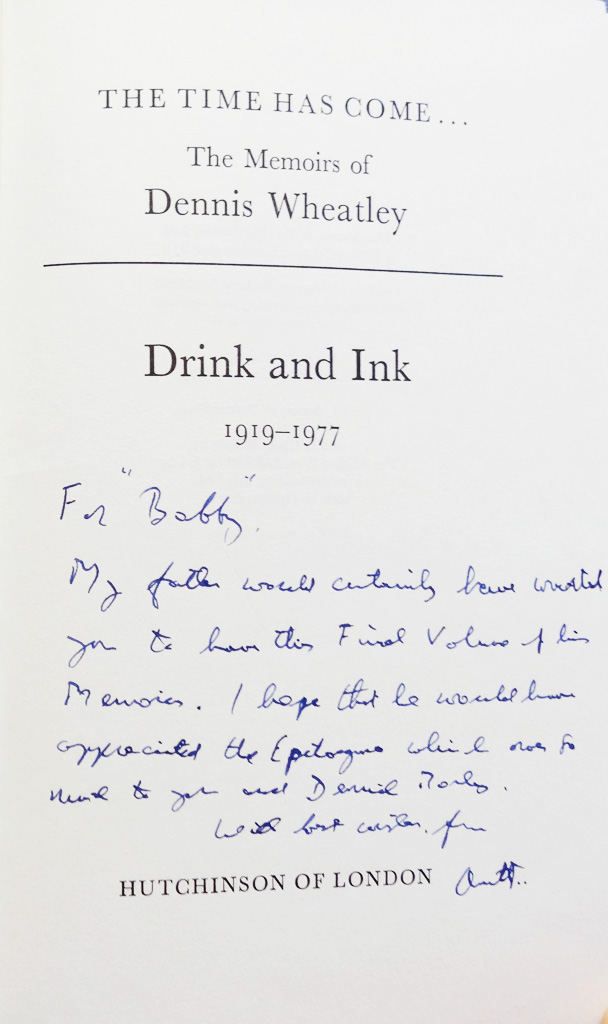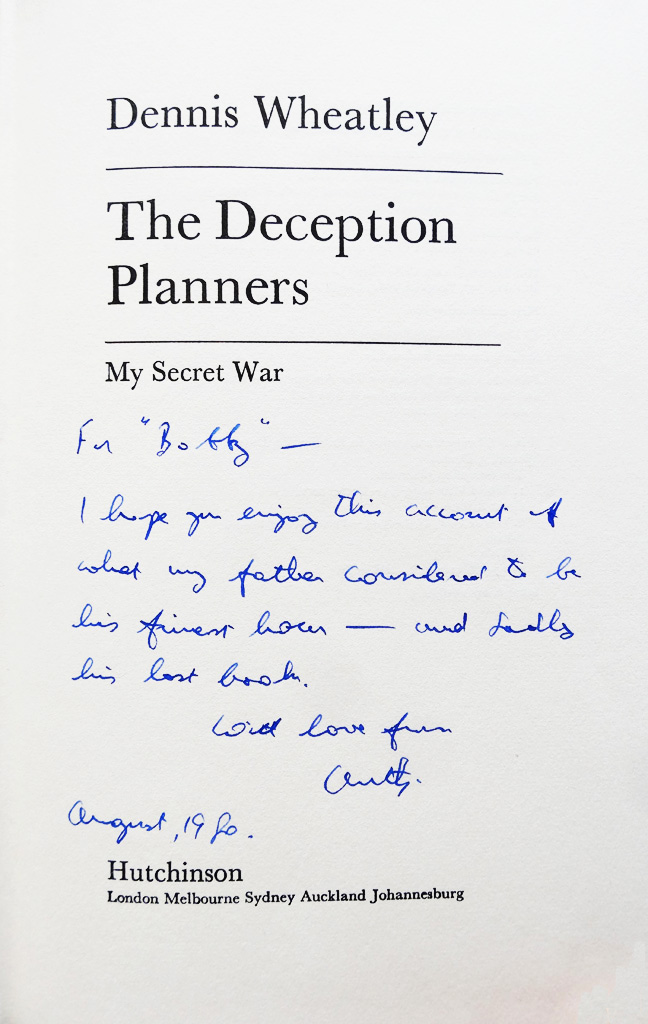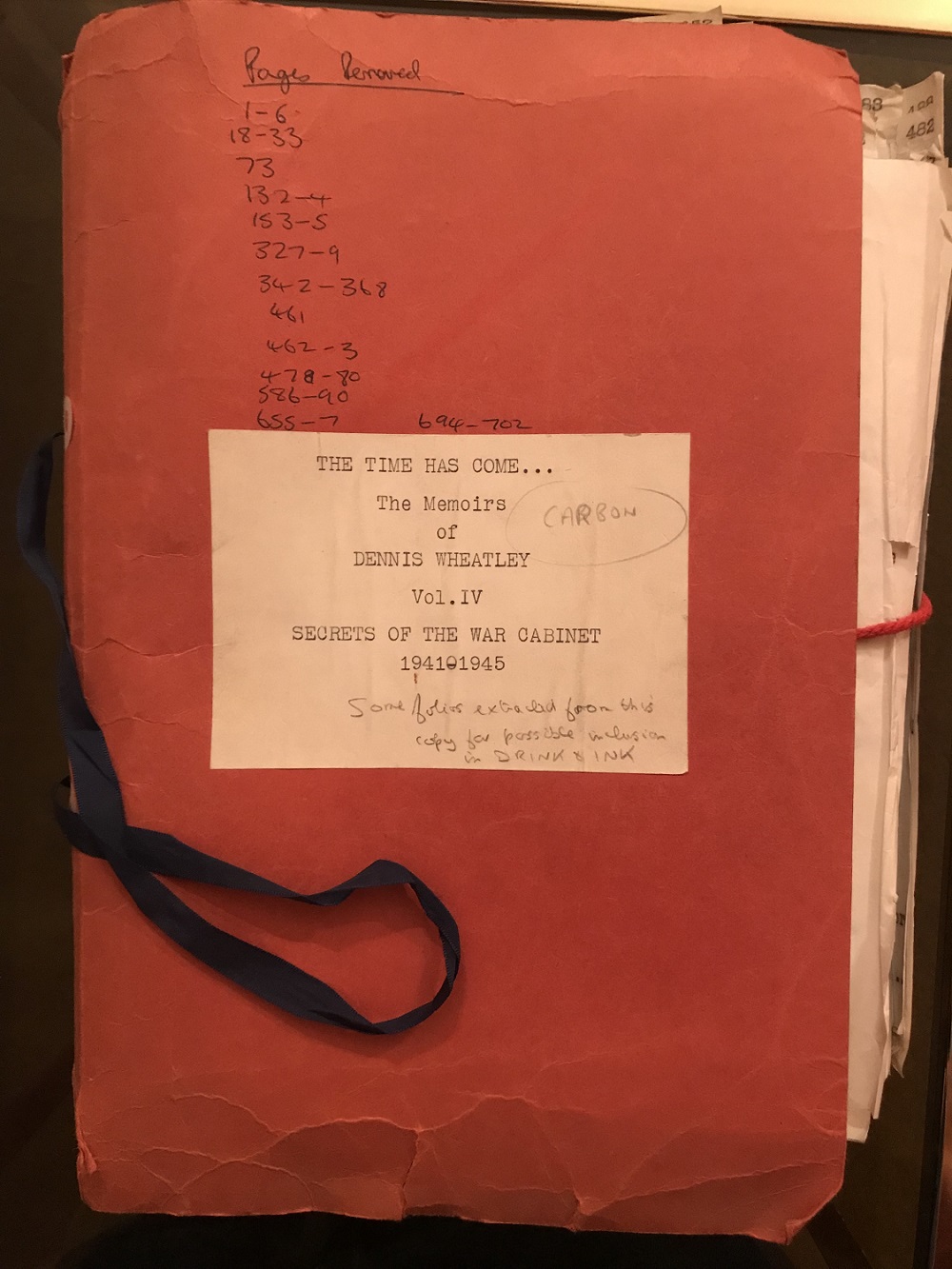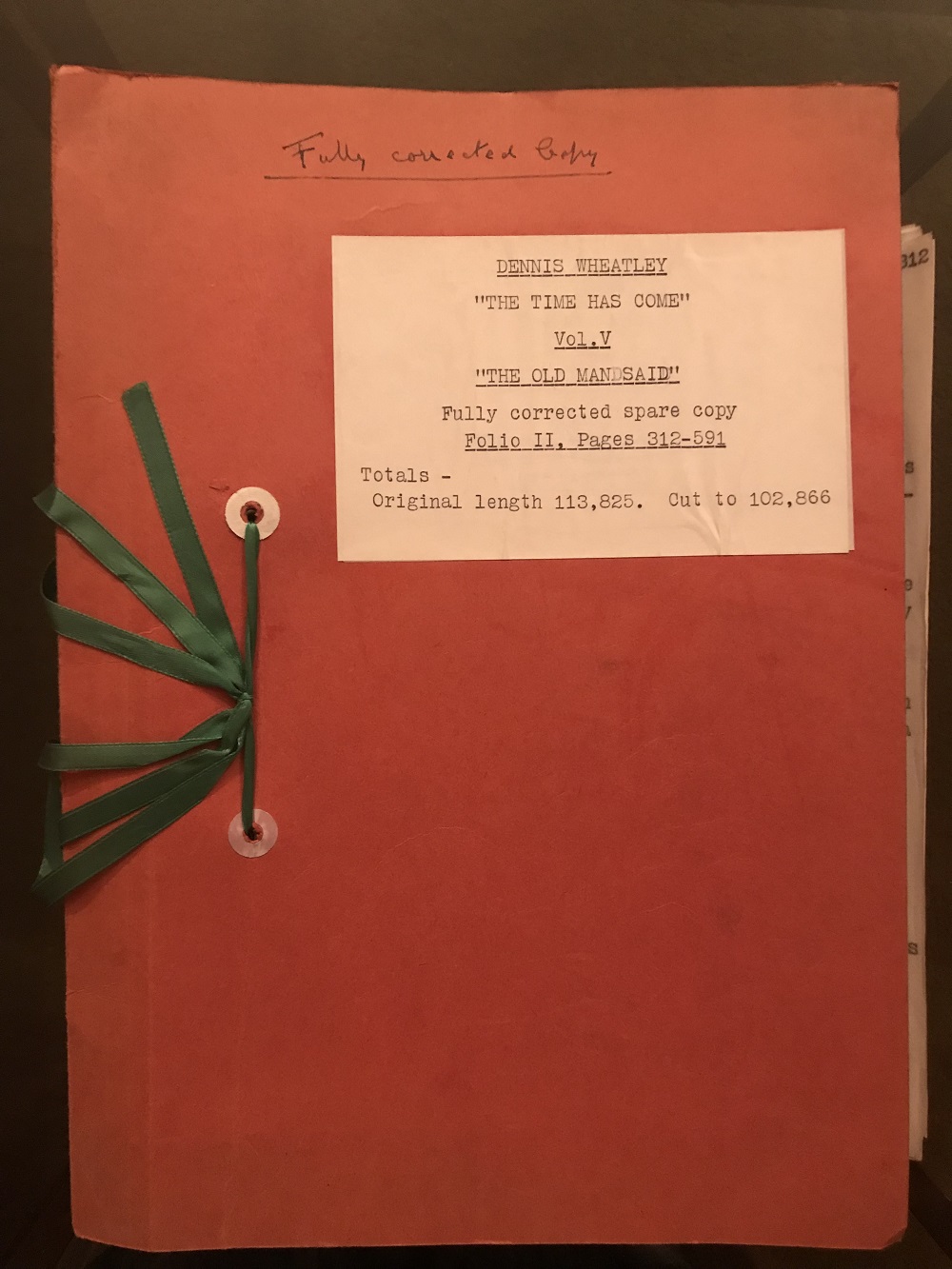Once his final novel, ’Desperate Measures’, was finished, DW started writing his auto-biography.
He had already written about his secret career in World War Two up to the point he was commissioned into the RAF in ’Stranger Than Fiction’(1959), and he had touched upon a few episodes of his life in World War One in ’Saturdays with Bricks’ (1961), but now he started writing about the rest of his life in earnest.
DW wrote five further volumes of autobiography, of which only the first, ’The Young Man Said’ (which covered his life from birth up to the outbreak of World War One) was published in his lifetime. It was launched at his 80th birthday party.
Three of the four other volumes were published after he died, but not in chronological order - presumably because security over his work as a Deception Planner was tight, and because publication while some of those who figured in it were alive might have been problematic.
The final volume, which DW entitled ’The Old Man Said’, was pared down for DW’s executors by his friend the journalist Anthony Lejeune*, and only small fragments of it have ever been published - as the final section (’Autumn’) of ’Drink and Ink’. The rest, which covered other aspects of the post War period, was judged (perhaps wrongly) to be of insufficient interest to the public, and left unpublished.
The typescript of this final volume was discovered in an attic in 2016 along with the typescript of what we now know as 'The Deception Planners'. While that was also edited posthumously, most of it survived intact, although several passages of considerable historic interest were omitted.
The complete sequence of DW’s autobiographical works in chronological order is therefore as follows:
| Period Covered | Title | First Published | Notes |
|---|---|---|---|
| 1897-1914 | The Young Man Said | 1977 | Covers DW’s youth up to the outbreak of World War One. |
| 1914-1919 | Saturdays with Bricks | 1961 | A charmingly strange mixture of reminiscences of things that happened to DW in World War One and practical bricklaying tips. Dedicated to Winston Churchill, who accepted the dedication. |
| 1914-1919 | Officer and Temporary Gentleman | 1978 | Covers DW’s life in World War One. |
| 1939-1941 | Stranger than Fiction | 1959 | Contains extracts from DW’s ’War Papers’, and an account of how they came to be written. |
| 1941-1945 | The Deception Planners | 1980 | Covers DW’s career as a Deception Planner, mostly in Churchill’s underground war rooms. |
| 1919-1939; 1946-1977 |
Drink and Ink | 1979 | Mostly about DW’s life between the Wars. Fragments of ’The Old Man Said’, which covered his post War life, were inserted by his editors and executors as a final 40 page section, entitled ’Autumn’ |
| 1946-1977 | The Old Man Said | - | Covered DW’s post War life. Only small parts have been published - as an additional and short final section of the published version of ’Drink and Ink’. |
References : | ‘Drink and Ink’ p 266 |
* To read an obituary of Anthony Lejeune, written by Steve Whatley for the 2018 Convention, Click here
Provenance : Private collection



